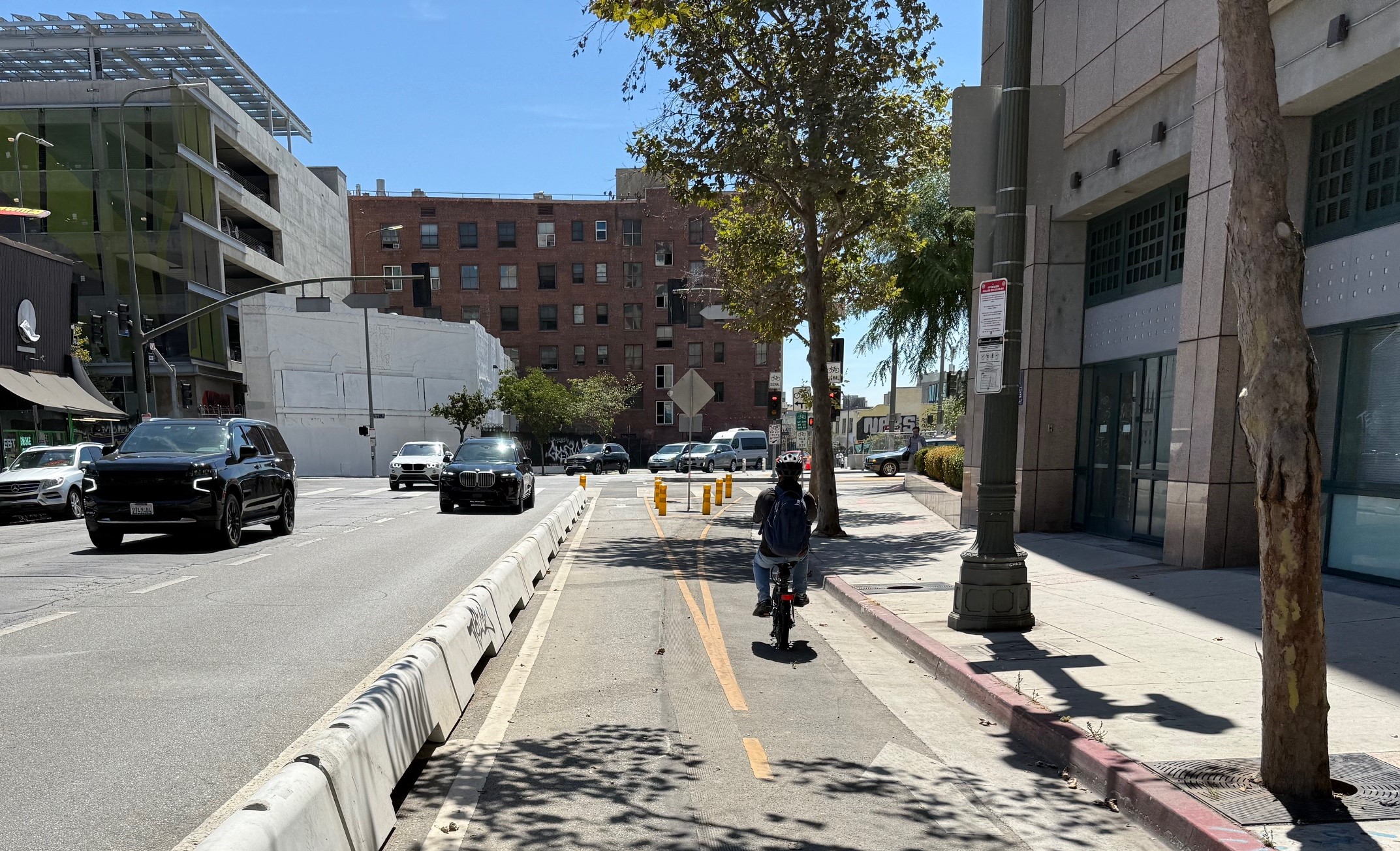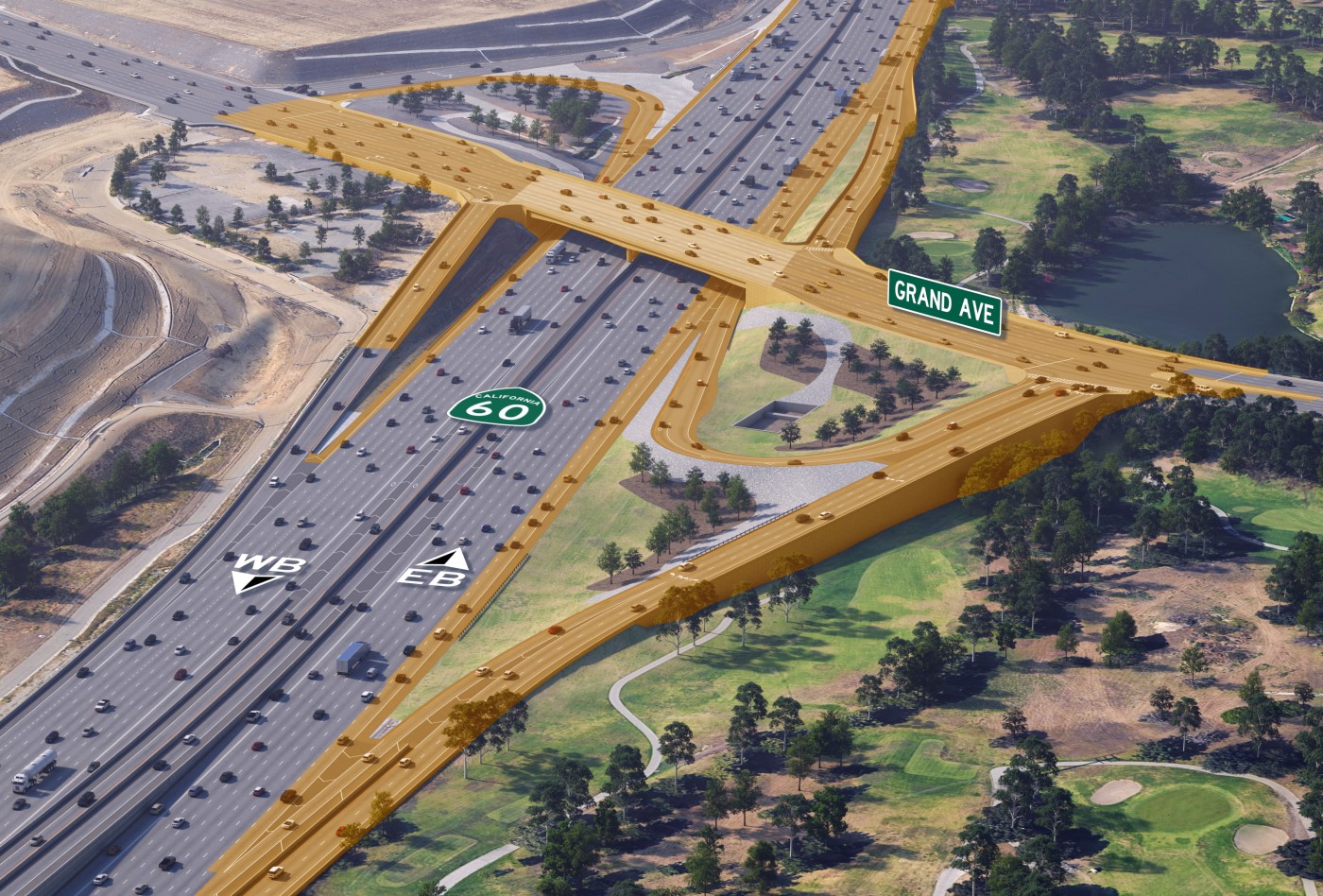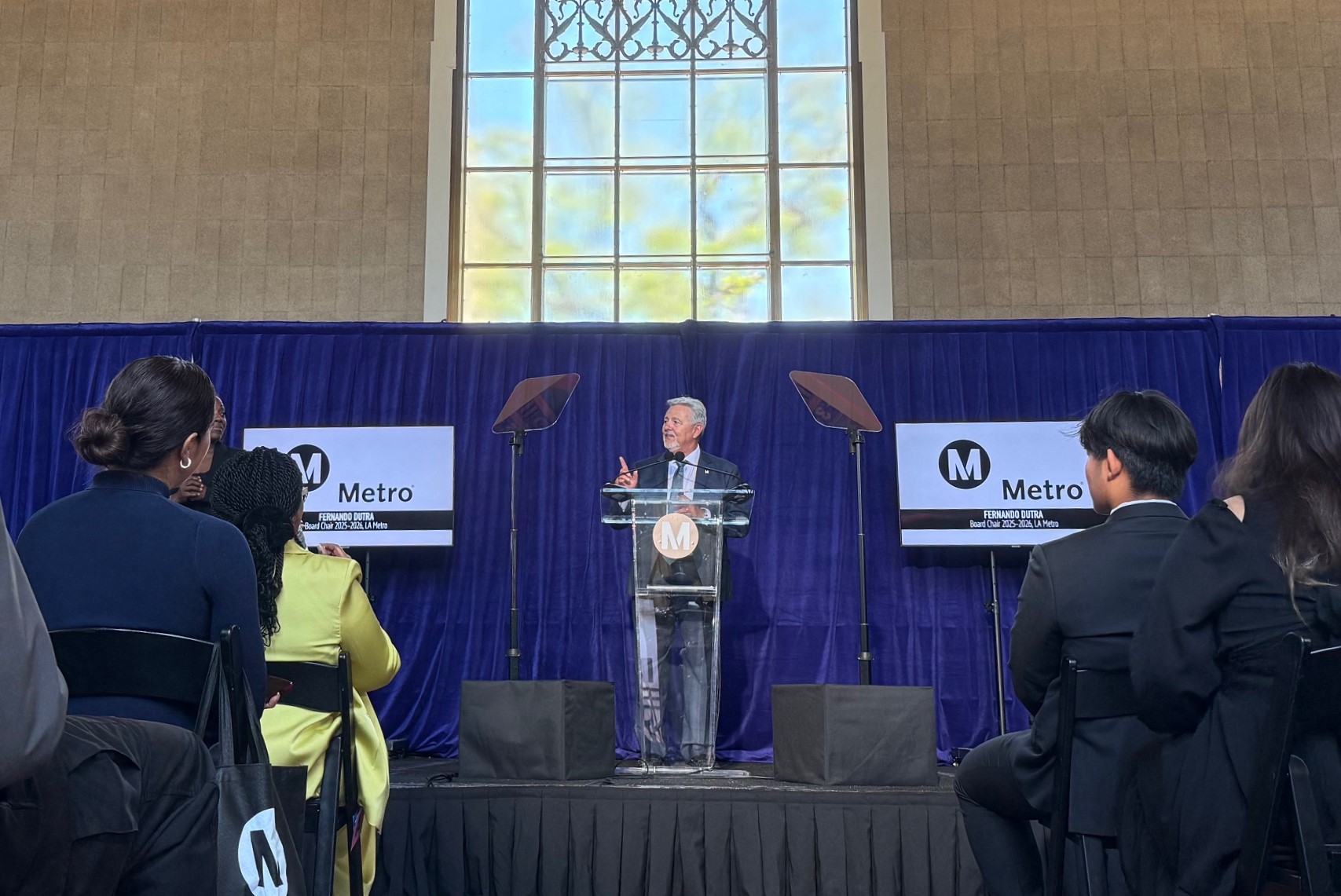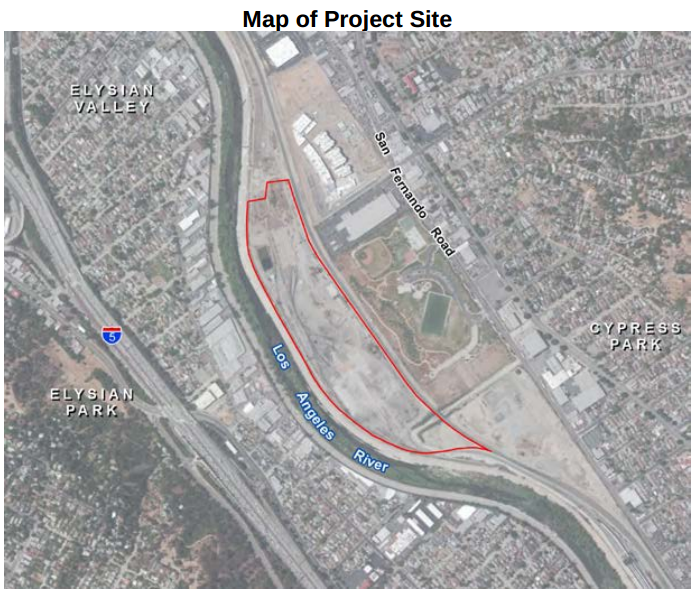
A big property acquisition is underway that will set the stage for planned large-scale revitalization of the Los Angeles River. The City of Los Angeles is expecting to complete the purchase of a former railyard site that Mayor Eric Garcetti and others describe as the "crown jewel" of any large-scale restoration of the river.
While there's a long lineage of leaders who pressed for this purchase, credit will go to Garcetti and City Councilmember Gil Cedillo for marshaling the present push.
In a statement to SBLA, Mayor Garcetti emphasized:
This parcel is a crown jewel in our plans to restore the Los Angeles River, and I'm proud to have made acquisition of it a top priority for the city. This site represents a large amount of open space that will help us free the river from its concrete straight jacket and connect local communities to its natural beauty.
In May, Mayor Garcetti celebrated the federal government's selection of an extensive $1 billion, 11-mile habitat restoration project. Though that is great news, there are still a lot of hurdles before that federal money washes up on L.A. shores--not the least of which is getting the feds to begin setting aside initial portions of that $1 billion.
Another hurdle is ownership of river land. Though the city has approved an ambitious river master plan, some parts of the plan would take shape on river sites that are currently privately owned. For the most part, the U.S. Army Corps of Engineers, the main federal agency involved in L.A. River work, does not proceed with project design and implementation on privately owned sites.
So, to tap into federal funding, the city needs to buy land.
That is just what they're doing. Recently released documents show that L.A. is nearing the final stages of purchasing a key 41-acre riverfront site called Taylor Yard parcel G2.
Taylor Yard is a nearly 250-acre former locomotive engine maintenance yard. It's located in North East Los Angeles, within a couple miles of downtown L.A., just north of Dodgers Stadium. The historic yard extended roughly three miles along the L.A. River from the 110 Freeway to the 2 Freeway. Taylor Yard is in the L.A. City communities of Cypress Park and Glassell Park, directly across from Elysian Valley. For cyclists familiar with the L.A. River walk/bike path through Elysian Valley, or Frogtown, Taylor Yard is the mostly vacant site on the opposite side of the river from the existing bike path.
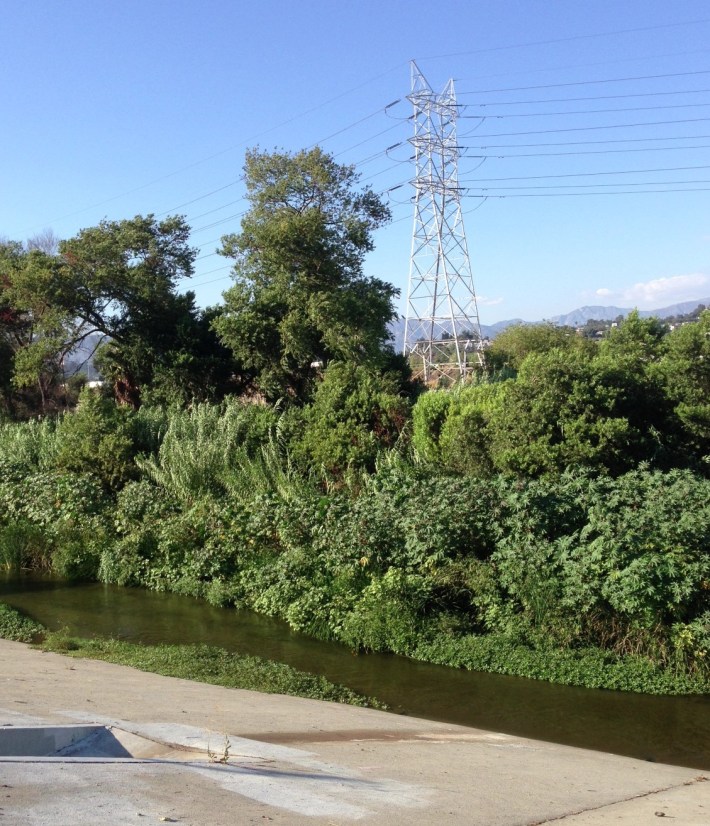
Though Taylor Yard had more than 10,000 employees in its 1950s heyday, rail functions were relocated and the site has been largely vacant since the mid-1990s. The rail industry left behind serious soil contamination. Nonetheless, the yard is the largest undeveloped riverfront site along the 51 miles of the Los Angeles River. The yard abuts the Glendale Narrows, one of the least concrete-covered, most natural stretches of river. There are plenty of tall trees, fish, and birds, plus lots of two-legged creatures enjoying the scenery.
In the late '90s and early 2000s, community leaders, most prominently including Melanie Winter and Raul Macias, waged a campaign against planned industrial redevelopment at Taylor Yard. These struggles were successful, resulting in California State Parks' purchase of two large former railyard parcels. Rio De Los Angeles State Park now occupies 40 acres fronting San Fernando Road. Less developed is State Parks' "bowtie parcel" which occupies 18 acres adjacent to the river and the 2 Freeway.
But the G2 crown jewel remained elusive.
Developer Trammel Crow secured a development option from G2's Union Pacific (UP) railroad owners, but, due to both community opposition and difficult-to-access site geometry, industrial redevelopment was never quite viable. City funding set aside for acquisition was partially siphoned off to other projects.
With a grant from the state Mountains Recreation and Conservation Authority, the Los Angeles River Revitalization Corporation (RRC) kickstarted analyses and negotiations. Late last year, Mayor Garcetti's team stepped in to bring the developer and UP to the negotiating table. Councilmember Gil Cedillo shepherded a council motion (#13-1641) which formally committed the city to negotiate purchasing the site.
City Councilmember Gil Cedillo's Chief of Staff Arturo Chavez emphasizes that, though the Taylor Yard parcel enables revitalization that benefits the entire city, it is most important in opening up river access for Cypress Park, Highland Park, and all of Northeast Los Angeles. Chavez stated that while Elysian Valley and Atwater Village communities are already enjoying early benefits of revitalization, Cypress Park is tantalizingly close to the river, but literally "on the other side of the tracks."
To purchase G2, the city has set aside $26 million in Proposition O city water bond funding. The overall price is not final, but may be in that vicinity. Part of the uncertainty involves accurately predicting the cost of cleaning up toxins, which depends on negotiations over the extent of the cleanup. The seller, of course, would benefit from a less intensive cleanup, to meet industrial standards, but the city's plan for a park with water quality features would necessitate cleaning to a higher standard.
As readers can imagine, real estate transactions are complex, even more so when they involve governmental agencies, railroads, public funding, and toxic contamination. One main indicator that the sale is proceeding is that the city is investing time and effort in its California Environmental Quality Act (CEQA) analysis. The city would only proceed with the pre-acquisiton CEQA work when and if the acquisition appears viable and imminent.
The CEQA Draft Initial Study/Mitigated Negative Declaration (MND) was released July 31. After comments close on September 2nd, the final MND will need to go through a series of approvals including the Board of Public Works, finishing at the City Council. After it is adopted, the city could proceed with escrow. If all goes smoothly, city approvals could be completed in October, and the sale could be underway before the end of 2014.
Due to the sensitivity of ongoing negotiations, though city sources confirmed that UP is a "willing seller," they declined to speculate about the final price of the parcel or the expected completion date of the purchase.
Adding up the numbers, when the city's anticipated 41 new acres combine with the state's 58 acres and a handful of river right-of-way acres, there will be a 100+ acre park. For some sense of what the future might hold for the Taylor Yard site, here are two images from the city's Los Angeles River Revitalization Master Plan.

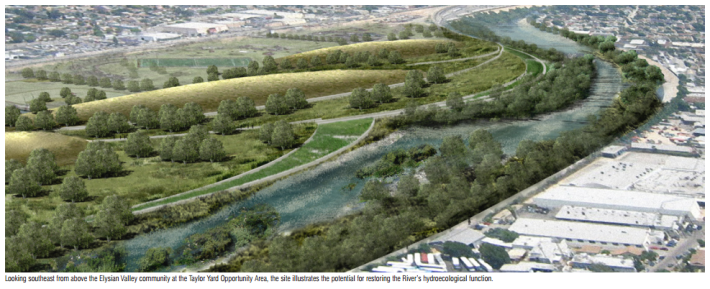
The city's MND documents include a conceptual site plan for approximately 10 acres of G2. The plan shows natural areas that collect and clean rainwater runoff.
![City of Los Angeles Mitigated Negative Declaration conceptual plan for Taylor Yard G2 parcel. From MND page 14 [PDF]](https://lede-admin.la.streetsblog.org/wp-content/uploads/sites/50/2014/08/MNDConceptPlan.png?w=687)
The concept plan does not program the remaining 31 acres. Once the site is in public hands, the city would work with the state and others to facilitate a community planning process. The park would need to interact with existing active rail, including Metrolink and Amtrak, that runs parallel to the river, as well as anticipated future high-speed rail. From the concept plan, access would include the existing road, plus a new pedestrain tunnel to Sotomayor High School, and a new walk/bike bridge to Elysian Valley.
Though the acquisition should be complete in the near future, it will take quite a while before the public is going to enjoy the massive new riverfront park. Soil remediation, planning, and funding will all take time. A complicated project like this is likely to take at least half a decade.
It is very good news to see progress on this long-sought river jewel making its way into public ownership.
To comment on the city's MND, get details here. Deadline for comments is September 2.
